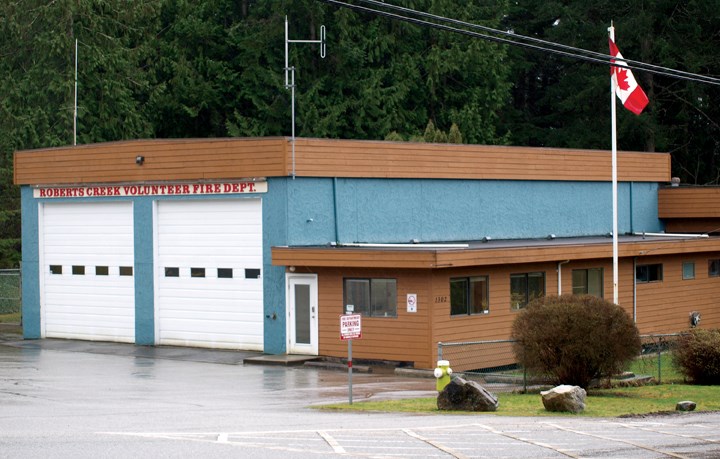A 20-year capital plan for the fire departments operating under the Sunshine Coast Regional District (SCRD) predicts shortfalls, even with steady contributions to reserves.
A report presented to the Jan. 26 meeting of the corporate and administrative services committee lays out two scenarios for annual contributions to the capital reserves of the Egmont, Halfmoon Bay, Roberts Creek and Gibsons fire departments – fixed amounts, or amounts that increase by two per cent a year. The report also says that even with those contributions, the departments will face capital shortfalls of anywhere from $437,000 to $3.9 million by 2037, which means the SCRD will have to borrow funds to make sure vehicles, equipment and buildings are kept up to date.
The 20-year capital plan is part of the SCRD’s broader asset management strategy, but the report points out that when it comes to asset renewal, fire departments are in a unique situation.
According to the report, “Unlike some services provided by the Sunshine Coast Regional District, emergency services cannot afford for assets to fail before being replaced. It is imperative that the firefighting equipment be routinely replaced in order to prevent any disruptions to service. In addition, the Fire Underwriters Survey (FUS) conducts detailed studies that they use to establish a Public Fire Protection Classification (PFPC) and Dwelling Protection Grade (DPG) for a given community … A lower PFPC or DPG grading can have an effect on community fire insurance rates.”
Chief financial officer Tina Perrault called the report, which was presented for information only, a planning exercise based on a “high-level evaluation” of the future capital needs of the departments. A similar report was drafted for recreation facilities last year.
The report says asset renewal for the Gibsons Fire Department could mean incurring debt for the first 10 years of the 20-year plan. The SCRD is already planning to borrow to help pay for a new ladder truck for Gibsons, which will be delivered later this year. It predicts borrowing will be needed for the Egmont Fire Department through the entire 20-year plan, but because it’s a small department, the projected shortfall to be covered is at the low end of the scale. Borrowing will be needed for Roberts Creek over the first 13 years, and for Halfmoon Bay over eight years in the middle of the 20-year plan.
“I think it’s good to keep perspective on some of these costs,” said Pender Harbour director Frank Mauro. “I’m glad that our asset management plan is bringing this to the forefront. I look at some of them, and there’s some significant costs that are going to be incurred because there are some potential shortfalls here … I know this is not an immediate hit, and it’s over time, but I think it gives a good perspective to everyone involved and the need to ensure that we make wise decisions when acquiring capital assets.”
Roberts Creek director Mark Lebbell said he welcomed the explanation of the insurance impacts of falling behind on facilities and equipment and the “criticality” of fire service assets. “They’re not like a hot tub,” he said.
Part of the information for the capital plan came from facility audit reports done by Ameresco Asset Planning in 2015. The audits looked just at the six fire hall buildings, with a focus on the condition of the “core building elements,” in particular the roof and exterior building envelope.
Those audits found the Roberts Creek Fire Hall will be the most expensive to repair. The estimate came in at $337,172 for work needed in the next five years. Gibsons is looking at an estimated $105,900 in work for both the main hall on North Road and Cliff Mahlman Hall. Halfmoon Bay VFD’s two halls will need around $94,500 in repairs and upgrades. The audit on Egmont, the newest fire hall, identified only $1,000 in needed repairs.
Following an August 2016 fire that destroyed a home in Port Mellon, which is outside the SCRD's current fire protection areas, West Howe Sound director Ian Winn put forward a motion asking for a report on changing fire service boundaries. That report is expected to come to the SCRD board in February.



